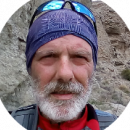

exchemist
Senior Members-
Posts
4527 -
Joined
-
Last visited
-
Days Won
74
exchemist last won the day on March 6
exchemist had the most liked content!
Profile Information
-
Location
London
-
Interests
Rowing, choral singing, walking.
-
College Major/Degree
Chemistry MA, Oxford
-
Favorite Area of Science
chemistry
-
Biography
Trained as a patent agent, then gave it up and worked for Shell, in the lubricants business for 33 years. Widowed, with one teenage son.
-
Occupation
Retired
Recent Profile Visitors
14302 profile views
exchemist's Achievements

Scientist (10/13)
1k
Reputation
-
Trump would like to carve up the world between three strongmen leaders: himself, Xi and Putin. So he wants to annex Canada and Greenland, take back the Panama Canal for strategic access to both coasts and oceans by sea, get out of entanglements in Europe, which he sees an economic rival and nuisance with all its pathetic concerns over outmoded ideas like democracy and social welfare - and let Xi have Taiwan, once he has got the chips being made in Arizona. If Putin fights with the EU, so much the better. It's Orwell's vision of Oceania, Eurasia and Eastasia.
-
A number of British former diplomats have suggested we need to do this. Trump may even at this moment be planning an invasion of Canada, for Christ's sake! I have little doubt the heads of intelligence in the other Five Eyes group will be urgently talking about how this could be done, hard though it will undoubtedly be. They may start by no longer sharing their most sensitive information. Obviously nothing on Ukraine. There is also a move for the EU to provide a backup for Ukraine to Musk's Starlink, which they have been using for military operations, in case Musk pulls the plug on that. There is another system I gather, a French one. De Gaulle was right, it seems, to insist that France should have independent defence capability. They have their own ballistic missiles, unlike Britain whose system was bought from the US.
-
What? You asked whether magnetism caused gravity, not whether gravity causes magnetism. The answer to the first is no. The answer to the second is a qualified no, in that gravity and magnetism are quite separate things. However it is true that the convective circulation in the Earth’s core is believed to be responsible for the magnetic field of the Earth. Convection is driven by density differences, that lead to differences in buoyancy under the influence of gravity. So without gravity there would be no convection and no magnetic field.
-
Because of your stupid answers. How do either house or phone prices cause the disappearance (your term) of an entire class in society?
-
Yes, the good thing (if there is anything "good" about this disaster) is this shows German people are alive to the seriousness of the sudden switch in alliances. We will all (and I mean the UK and Norway plus the EU) need to put our hand in our pocket to fund a rapid rearmament of Europe. Taxes must rise and we need a lot more of those excellent German panzers. Not only to help Ukraine but to defend the eastern boundary of the EU, especially Poland and the Baltics. The USA is no longer an ally and could easily become the enemy, at least in terms of intelligence sharing and cyber warfare. We have to kick the US out of the Five Eyes system. Anything we tell them may go straight to Moscow.
-
Yes, it is a recipe for war: war between the EU and the USA. And war between Canada and the USA as well: let's not forget Trump wants to annex Canada, having crushed it economically. Trudeau's speech makes crystal clear that that is not a joke. Trump means it. Trump seems to be engaged in deliberately wrecking relations with all the other members of the Western alliance. It looks as if his idea is to remake the globe into Orwell's Nineteen Eighty Four power blocs: Eastasia, Eurasia and Oceania. Europe has certainly got the message it is on its own now. As has Canada.
-
How is that evidence that the "middle class", whatever definition of it you have in mind, is "disappearing"? And what has any of this to do with supposed "liberals"?
-
This seems to be question-begging. Where have these (at least partly false) statements been “denied”? But what do you mean by “middle class”? Do you mean what we used to call lower class or working class? In other words people that do predominantly manual or “blue collar” , or otherwise poorly paid jobs? Or do you mean what in the UK we mean by middle class, which is the class above the aforementioned, predominantly professional, managerial, university educated? Whichever it is, what makes you think it is disappearing? I don’t see any evidence that either group is. I don’t know what you mean by “liberal” in this context either, so you should not take my reply to the OP to be agreement to being classed as one, whatever it may be.
-
I can't speak for others but I've now had enough of this. Every time we try to explain something, you move the goalposts back to something earlier in history and claim you can't understand what we are saying because of this earlier issue, which you had not previously raised. That makes it impossible to progress. You also claim to be unable to understand the references we provide. Yet it is clear you are not an idiot. I do not think you are posting in good faith. I think you are abusing our goodwill, time and effort to jerk us around. I'm out.
-
This was all a load of overblown cobblers talked up by media hype and it was in the press in 2016, not last year. Many of the transactions "revealed" were perfectly legal, though certainly a number were due to tax evasion. As far as David Cameron's father was concerned, he was a stockbroker (not in itself anything remotely shady) who set up a company, offshore from the UK, for people wishing to invest in dollar denominated shares. That's all. It was perfectly legal and above board.
-
Here's the paper: https://www.nature.com/articles/s41467-024-55662-4 Sadly it is written in the usual, almost unreadable, style of so many papers these days, but the graph of the decay curve they obtained, from their measurement of samples, was interesting: Fig. 2: 10Be concentration vs. age measured in crust VA13/2-237KD. The bump is the anomaly. This graph suggests they can use ¹⁰Be for dating up to 14Myr or so (except obviously where the flat bit is, from ~8-10Myr).
-
exchemist started following Karin Fronczke
-
Karin Fronczke started following exchemist
-
Don't if you have seen this (or can read the poor copy) but there is a lot of this kind of thing circulating in the UK right now Oh there will be plenty of MAGA groups happy to make these threats, I've no doubt. And nobody will be able to pinpoint who, precisely, has suggested which politicians to threaten. The next step will be to threaten judges on the same basis.
-
Oooh, so it’s that ghastly Ayn Rand woman! Now why does that not surprise me?😉 She’s the one who advocated a philosophy of personal selfishness, thought millionaires were heroes and social welfare was an abomination…..and then spent her declining years living on, er, state social welfare benefits. So a thoroughly poisonous individual - and a hypocrite to boot. Oddly enough, I don’t feel motivated to read her effusions. But then, I was brought up with a Christian ethical system, of which Ayn Rand’s ideas are the absolute antithesis.
-
I see there are now reports that Hegseth has told the US Military Cyber Command to stop all work on the Russian target, and that analysts have been not to report, or follow up reports, of Russian threats. Can anyone corroborate this? If true, it can only be because Trump has received assurances from Putin that the USA is no longer going to be a target for Russian cyber activity. This would leave Russia free to focus on Europe. No doubt we in Europe can look forward to more undersea cable-cutting, placing of bombs in airfreight, mysterious fires at factories and cyber attacks on social services and power networks. While Trump and Vance laugh and cheer from the sidelines.
-
Who is the writer and what are his or her credentials on the subject?



.thumb.jpg.70ecf951b74c9e873065484cf41dd475.jpg)




